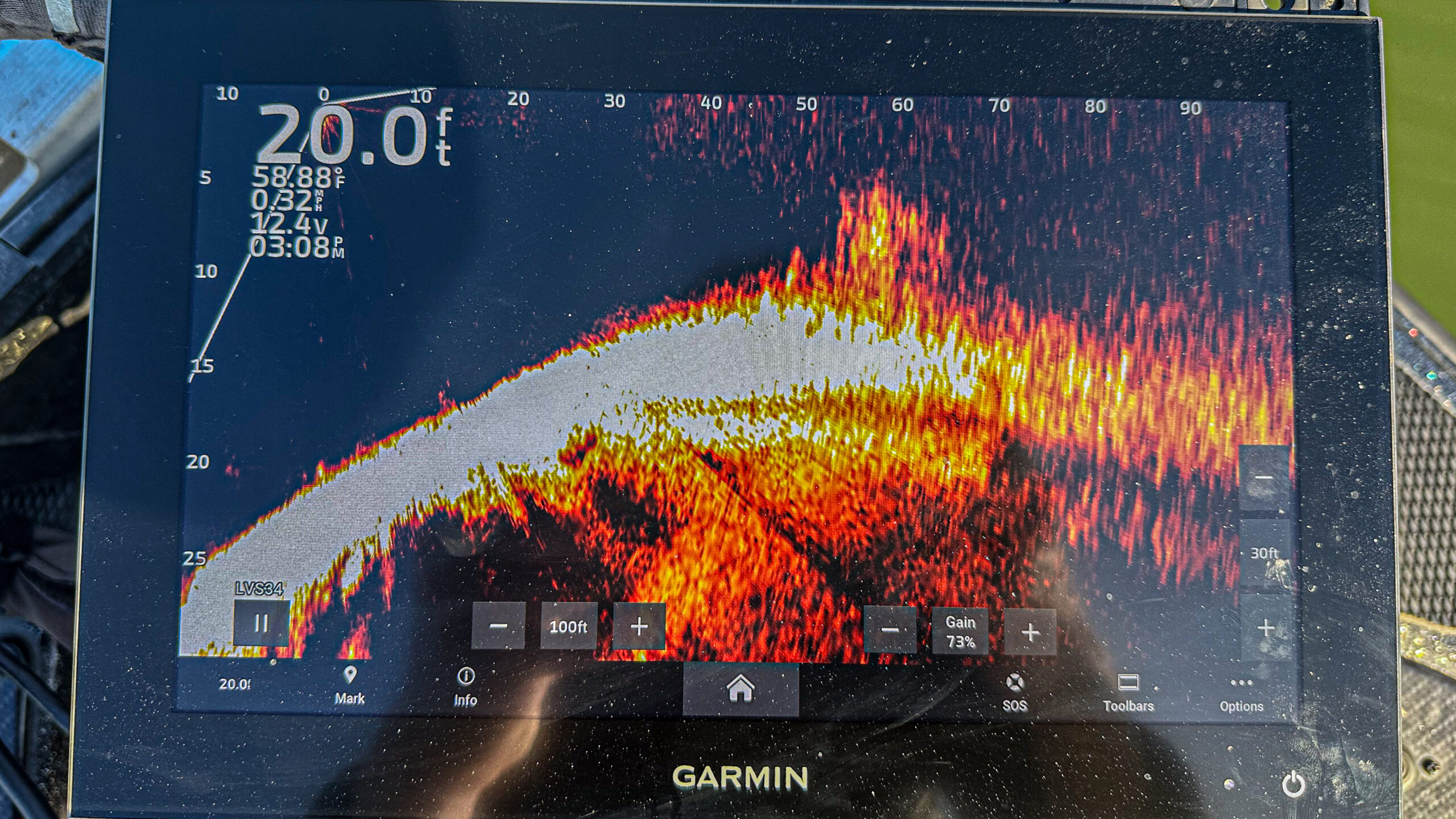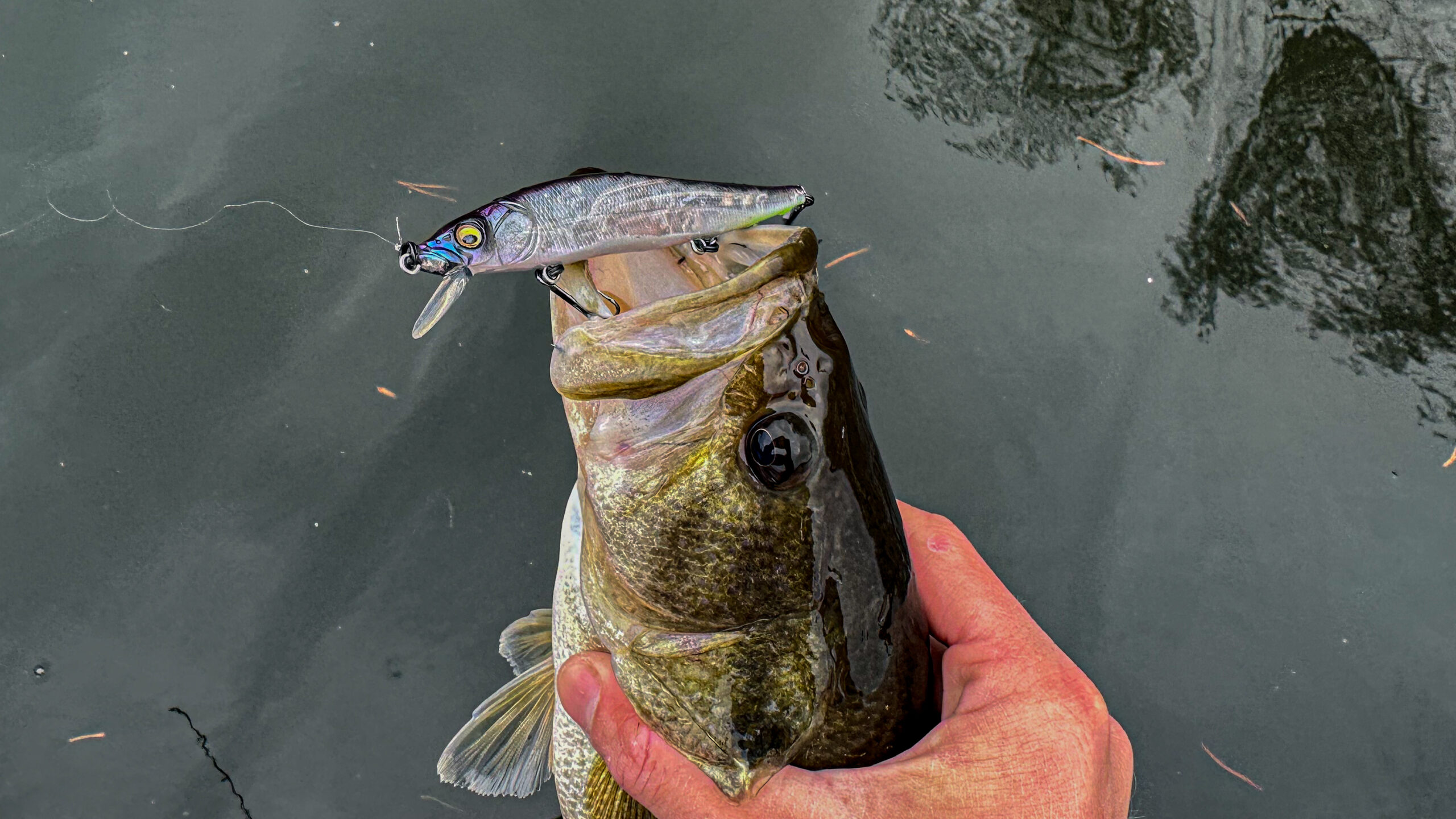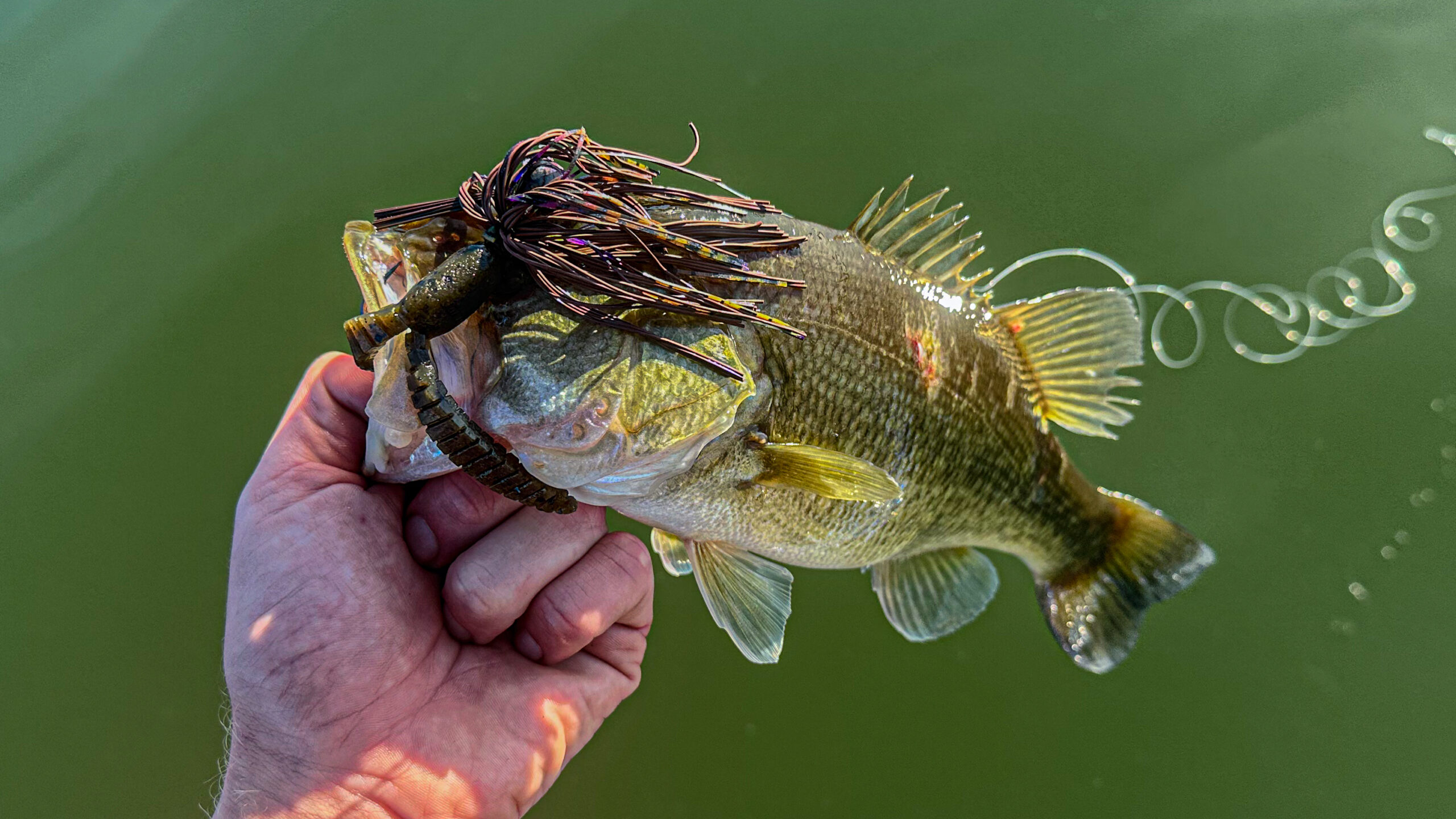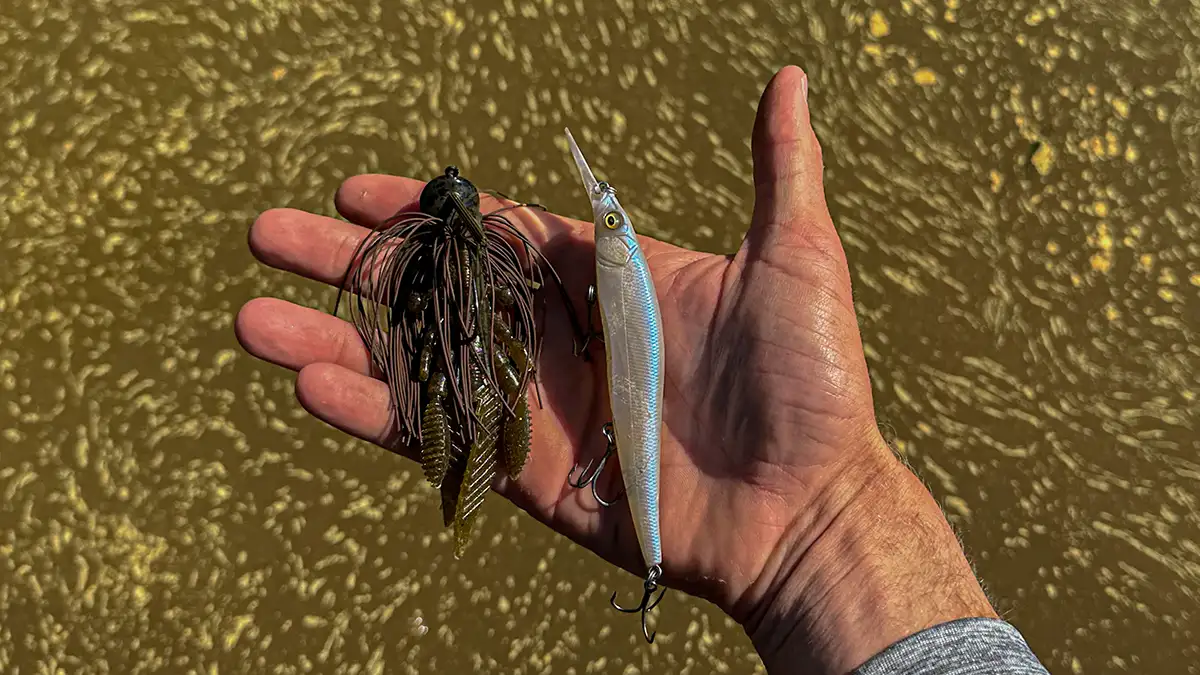Offshore fishing is something that used to really intimidate me. However, over the last several years it has quickly transitioned into my favorite way to fish. Whether it be ledges, hard spots or brush piles, I love casting at a specific piece of structure or cover. One of my favorite pieces of cover to target is brush piles. Finding groups of brush piles and rotating through them throughout the day is a super efficient and effective way to catch a good limit of bass.
While this technique may sound simple, it can be fairly complicated based on the fishes mood and how they’re positioned in the brush. I’ve had a lot of success fishing brush piles. I’ve had a lot of unsuccessful days as well. Over the last several years of practicing this technique I’ve picked up on several nuances that have really helped me. I like to employ a one-two punch for brush pile fishing that includes calling them out on a moving bait, then making them eat with a bottom bait.

READING THE FISH
Reading the fish is one of the most important factors in coaxing these bass to eat. What I mean by reading the fish is gauging their willingness to eat based on how they position themselves around brush. This tells you what lure to throw and how to present it in the most effective manner. One of the easiest ways to gauge their willingness to eat is by seeing how high they are positioned in the water column.
Typically, if bass are positioned at the top of the brush pile they are far more willing to chase down a bait and eat it. You can often catch these fish on a first cast on lures such as a jerkbait or jig and minnow. If the fish is poisoned deep in the brush, however, they can be more difficult to coax into eating. This is when getting the fish to bite requires a little bit of finesse. One of the best ways to get bass sitting deep in the water column to bite is by throwing a finesse style bottom bait.
Some of my favorites include a drop shot, shaky head and a jig. While these are all productive methods for catching fish on the bottom, reeling them out of thick brush can often be difficult. This is especially true when using light spinning gear in clear water. One of the best ways to successfully get these fish to the boat is by calling them out of the pile using a moving bait, then immediately follow up with a finesse style bottom bait.

CALLING FISH OUT
Calling fish out of brush is a great way to generate some ferocious reaction strikes. However, these fish don’t always commit. I can recall hundreds of times where fish have followed my bait to the boat without committing. I spent a large portion of my life thinking these fish were uncatchable, that is, until I started employing this one-two punch technique. I recently competed in a tournament on one of my local bodies of water where this technique really showed its potential.
During this event fish were extremely pressured and hard to get to bite. On day one of the event I was targeting brush piles in 15 to 5 feet of water using a variety of moving baits. I caught fish on a jerkbait, jig and minnow and a glide bait by calling them out of the brush and getting them to react. I’d often have to call them out on a jig and minnow or glide bait, then follow up with a jerkbait to get them to commit.
A jig and minnow is great for efficiently getting your bait in front of fish and pulling them into open water. Once these fish were higher in the water column I’d burn my bait to the boat and give them a slower presentation with the jerkbait causing them to commit. This had me sitting high in the standings after day one. I was confident this technique would work again the following day. However, I quickly found out on day two this wasn’t going to be the case.

MAKING THEM EAT
On day one I caught the majority of my fish on the first or second cast over a brush pile as they were fairly active and willing to eat. Day two proved to be different as the fish would barely acknowledge my jig and minnow. I transitioned to throwing a drop shot into the piles with the hopes of catching them with a finessed approach. While this technique did land a couple keepers, I was having trouble getting them out of brush before they wrapped me up. I ended up breaking off several quality fish leaving me only three keepers with a few hours till check-in.
I transitioned back to the moving baits with hopes the fish would turn on. They continued to follow my bait then slowly peel off and cruise to the bottom. After this happened a couple times I decided I would try following up my moving bait with a drop shot since they seemed more willing to bite with that presentation. The first fish I threw at I caught which quickly keyed me in on what I needed to do. I ran a few more brush piles and culled out nearly every fish I had with quality sized largemouth.
This technique was so effective because it allowed me to call the fish into open water, then get them to bite using finesse tackle without fear of breaking off. This allows you to give a single fish multiple presentations, thus greatly increasing your chances of catching it. Precise casts are extremely important for this technique as you often have to hit them on the head to get them to react. Another component that can really increase your success with this technique is bait selection.

BAIT SELECTION
When practicing this one-two punch technique, I generally rotate between a handful of baits based on the conditions and fish behavior. These include a jig and minnow, jerkbait, and glide bait for moving baits, and a drop shot and jig for bottom baits. I typically start with a jig and minnow as this is the most efficient way to quickly get your bait in front of fish. This typically requires clean water and is something I’ll steer away from if the water has a lot of stain. A jerkbait is my preferred method for this style of fishing in the majority of water clarities.
This lure allows you to quickly adjust your cadence based on the fishes reaction, giving you a greater chance of success. Some of my favorite jerkbaits for this application are the Berkley Stunna 112 and the new Rapala PXR Mavrik 110 Jerkbait. A glide bait is another extremely productive way to get these fish to react. While you often don’t get many bites with this style of bait, it’s great for calling fish out of cover where you can target them with a more finessed approach. The Spro KGB Chad Shad is my preferred lure for this style of fishing as it has a fast sink rate allowing you to quickly get your bait into the strike zone.
Last but certainly not least, a drop shot and jig are some of my most productive lures for getting bites using this approach. I generally stick with a drop shot in this scenario as it often generates the most bites. I almost always use a weedless drop shot hook such as the Gamakatsu G-finnese Worm Hook as it allows you to throw around brush without fear of snags. In this scenario, baits such as a Strike King Filler Worm and a 6-inch Roboworm are both productive lures for getting bites.
I’ll employ the jig when I feel like the water clarity is too dirty for a drop shot. I think this lure is better at getting fishes attention as well as triggering a quick reaction strike. I typically use a heavier jig to quickly reach the strike zone before the fish get back to the brush pile. One of my favorite jigs to use in this scenario is the 3/4-ounce Greenfish tackle Little Rubber jig.
IN CONCLUSION
This is everything you need to successfully catch fish out of brush in any condition. I’ve been practicing this technique for the last several months, and you’d be amazed how many fish you can get to eat using this simple trick. If you’re looking to increase your success rate fishing offshore brush, I’d highly recommend giving this one-two method a try.












